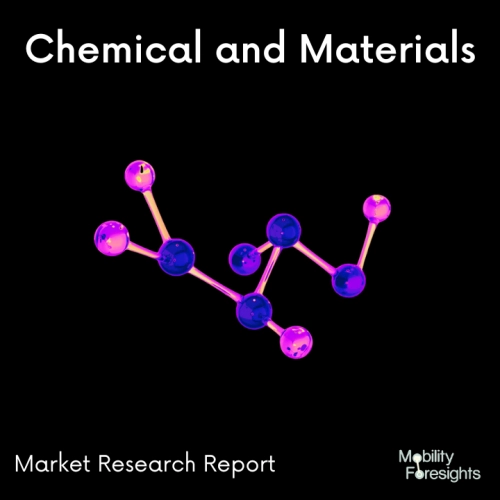
- Get in Touch with Us

Last Updated: Apr 25, 2025 | Study Period: 2024-2030
A new kind of highly efficient heat exchanger constructed of several titanium sheets with specific corrugated forms is called a titanium plate heat exchanger. Heat exchange occurs through the half plates, which are arranged in thin rectangular channels between the various plates.

The titanium plate heat exchanger's basic design. Frame and titanium plate make up the majority of a titanium plate heat exchanger. Titanium plates are created by pressing titanium plates into corrugations with a variety of molds. Each titanium plate has four corners with angular holes for media flow channels.
Rubber gaskets are used to seal the titanium plate's perimeter and corner holes. A fixed pressing plate, a moveable pressing plate, upper and lower guide rods, and clamping bolts make up the frame. The titanium plates are stacked between the fixed compression plate and the moveable compression plate to create the titanium plate heat exchanger, which is then secured by clamping bolts.
| S.NO | Overview of Development | Details of Development |
| 1. | Bowman | Bowman is pleased to announce the release of its new line of titanium heat exchangers in response to the enormous market demand that has been identified. Titanium is the perfect material for heat exchangers in swimming pools since it is resistant to changes in pH. |
| 2. | Tricor Metal
| Bolted and gasketed plate heat exchangers (PHEs) are products that Tricor Metals designs and manufactures for a variety of sectors, including chemical, refinery, power generation, metal processing, lube oil cooling, and many more. |
The current 5113 line, which offers cupro-nickel and stainless steel versions, is already a market leader for Bowman. Swimming pool heat exchanger sales have significantly increased globally ever since the 5113 series was introduced. With the new Titanium Heat Exchanger, which bolsters our already well-known 5113 brand, we anticipate a significant sales increase.
For quick PHE construction and fulfillment, Tricor Metal keeps SS316 and titanium plates in stock.For practically all brands of PHEs, They provide replacement parts and reconditioning services.
Thinner PHE plates:There is a growing demand for the use of titanium metal to make thinner, wider PHE plates to increase efficiency and performance.
PHE Thermal and Hydraulic Performance:All manufacturersâ developed titanium PHE plates undergo thermal and hydraulic tests to obtain the required accurate correlations for the computer-based design of PHEs with these for commercial use.
Use in the shipping industry of titanium PHE:Due to salt corrosion that happens in ships often, titanium PHEs are becoming pretty common in the shipping industry to strengthen the corrosion treatment of sheet metal as titanium is less corrosive.
Welded Plate Heat Exchanger in eclectic power plants:In the electric power field, welded titanium tubes for power plant condensers or titanium sheets (hoops) used as materials for welded titanium tubes are the main applications for titanium. Welded titanium tubes for condensers are used in thermal power generation ornuclear power generation.

The Global Titanium Plate Heat Exchanger (PHE) market accounted for $XX Billion in 2023 and is anticipated to reach $XX Billion by 2030, registering a CAGR of XX% from 2024 to 2030.
Titanium has exceptional corrosion resistance, especially in chlorine-containing fluids, and despite its high cost, titanium-made plate heat exchangers are still commonly used in corrosive applications. The shaping of the plate, which is currently primarily done by pressing the plate, is the key to producing plate heat exchangers.
Pure titanium GR1, GR2, and titanium palladium alloy with a thickness of 0.4 to 1.5 mm are typically used to create titanium and titanium alloy plate heat exchangers.
Heat transfer efficiency and flow resistance are significantly impacted by the heat transfer plate's corrugated design. The Z-shaped corrugated plate and the horizontal flat corrugated plate are the two most common varieties of corrugated heat transfer plates that have been designed to fulfill the requirements of various heat transfer circumstances.
Carbon steel, stainless steel, aluminum and its alloys, brass, monel alloy, nickel, titanium, etc. are all examples of sheet materials.
| Sl. No | Topic |
| 1 | Market Segmentation |
| 2 | Research Methodology |
| 3 | Executive summary |
| 4 | Potential Opportunities in Titanium Plate Heat Exchanger Market |
| 5 | Avg B2B price of Titanium Plate Heat Exchanger Market, By Region |
| 6 | Major Drivers For Titanium Plate Heat Exchanger Market |
| 7 | Global Titanium Plate Heat Exchanger Market Production Footprint |
| 8 | Challenges in the Instalment of Titanium Plate Heat Exchangers |
| 9 | Technology Trends In Titanium Heat Exchanger Market |
| 10 | New Product Development In Titanium Heat Exchanger Market |
| 11 | Overview on Advantages of Plate Heat Exchangers |
| 12 | Titanium Plate Heat Exchanger in Various Industries |
| 13 | Market Size, Dynamics And Forecast By Geography, 2024-2030 |
| 14 | Market Size, Dynamics And Forecast By Application, 2024-2030 |
| 15 | Market Size, Dynamics And Forecast By Type, 2024-2030 |
| 16 | Competitive Landscape Of Titanium Heat Exchanger Market |
| 17 | Market Share in the Titanium Heat Exchanger Market |
| 18 | Amount of Titanium used by Titanium Heat Exchanger Manufacturers |
| 19 | Chinese Titanium PHE Suppliers and their status |
| 20 | Recent M&A in the industry |
| 21 | Growth strategy of Major Players |
| 22 | Company Profiles |
| 23 | Unmet needs and Market Opportunity for suppliers |
| 24 | Conclusion |